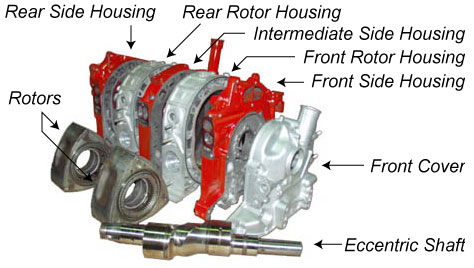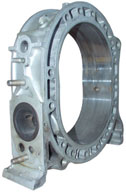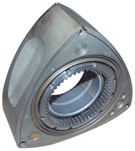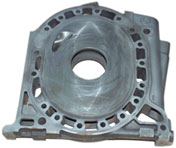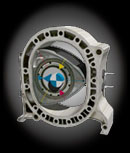 |
|


The first thing you notice about rotary engines are their incredibly compact dimensions. A basic 13B (1.3 liter) engine is approximately the size of a beer keg and can be lifted by one fit person. At the same time, it has a volumetric capacity twice that of a conventional piston engine of identical rated displacement. How is this possible? The secret is in the packaging. Each rotor section (rotor and housing) form three working chambers, which work simultaneously to move its entire rated displacement on each turn of the eccentric shaft. How it does this will be the subject of later RE 101 articles; for now, let's look at the components and nomenclature.
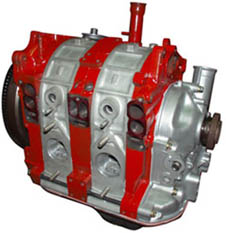
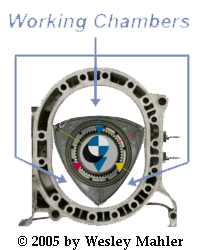
Rotary engines are basically a sandwich of iron and aluminum housings that contain rotors and an eccentric shaft. Typical rotary engines have two rotor sections, with rotor housings providing lateral containment of the rotors within. Additionally, there are three side housings (front, intermediate, and rear) to provide fore and aft containment. Rotor housings are typically aluminum, while side housings and rotors are cast iron with machined surfaces. The eccentric shaft connects the two rotors, 180 degrees out of phase, slightly offset from the center of rotation, and transmits power to the flywheel, similar to the crank in a piston engine. Intake ports are typically run through the side housings, in what is called a side port intake configuration, while the exhaust ports are traditionally run directly through the rotor housings, which is referred to as a peripheral port exhaust configuration. With respect to ports, one important difference between rotaries and their piston counterparts is the lack of any complicated valvetrain to control the intake and exhausts ports. Instead, the ports are opened and closed by the movement of the working chambers.
